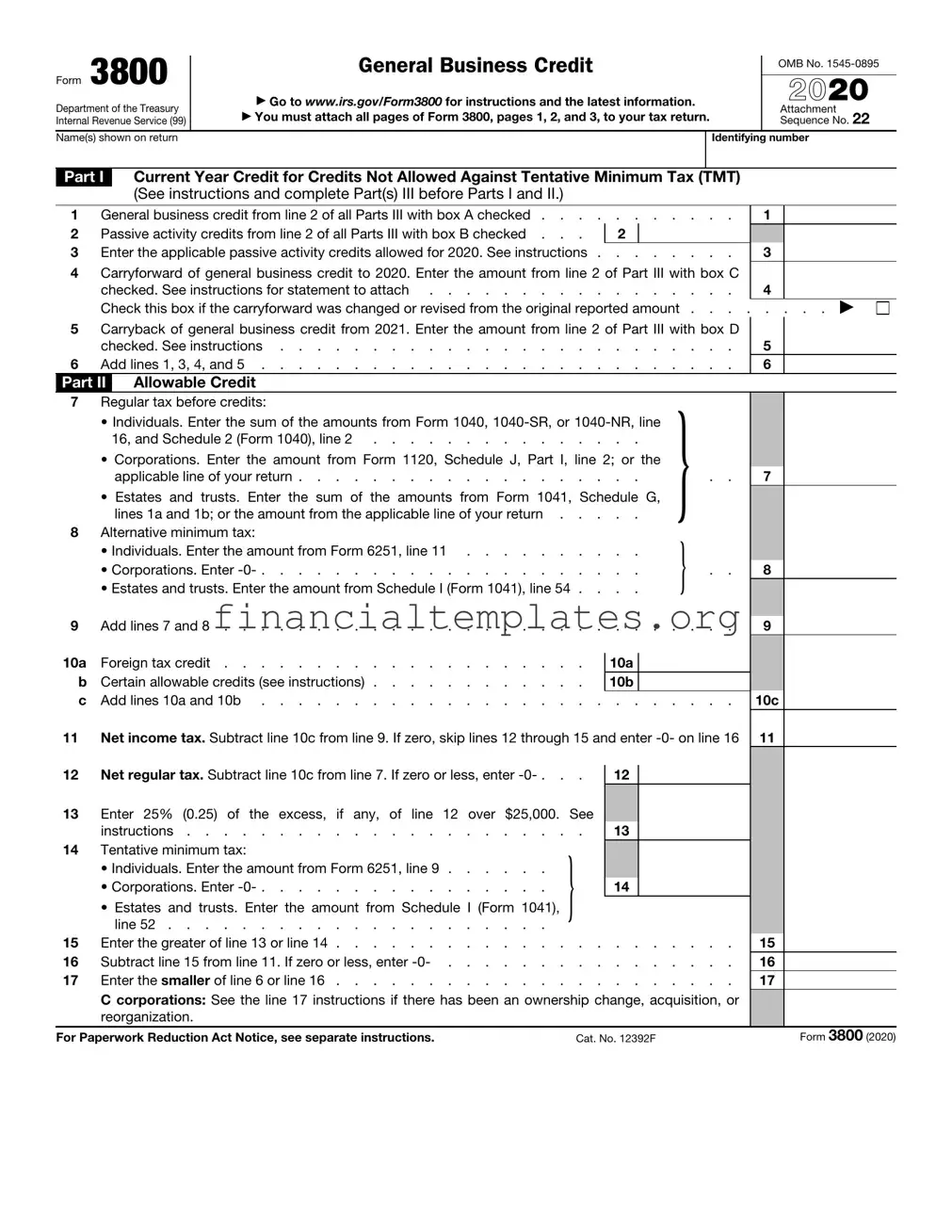The IRS 3800 form, known as the General Business Credit form, is designed to consolidate various tax credits available to businesses into one, streamlined document. In essence, it works to simplify the process for taxpayers to claim multiple credits. Similar in function and purpose, the IRS Form 3468 (Investment Credit) captures a blend of credits related to investment in certain property and projects. Like Form 3800, it aggregates various incentives aimed at encouraging specific types of investments, thus serving to promote economic activities within certain sectors.
Another document bearing similarity to IRS Form 3800 is the IRS Form 5884 (Work Opportunity Credit). This form allows businesses to claim credits for hiring individuals from certain groups that have significant barriers to employment. Both forms serve to incentivize behavior that contributes to broader social or economic goals, emphasizing the government's role in promoting employment opportunities among underserved populations through tax benefits.
Similarly, the IRS Form 8844 (Empowerment Zone Employment Credit) encourages businesses to hire employees who live and work in designated empowerment zones. This is in line with the objectives of Form 3800, as both aim at stimulating economic activity in specific areas or sectors, rewarding businesses with tax credits for contributing to these efforts. Each form plays a part in a larger framework designed to use fiscal policies to guide economic development.
The IRS Form 8845 (Indian Employment Credit) offers tax incentives for businesses that employ American Indians and Alaska Natives. This parallels the theme of Form 3800 by supporting employment in targeted communities, thus both forms share a common goal of using tax policy as a tool for social and economic empowerment.
Furthermore, IRS Form 8834 (Qualified Plug-in Electric and Electric Vehicle Credit) promotes environmental sustainability by providing credits to businesses and individuals who purchase certain types of vehicles. This form, akin to Form 3800, is part of the tax code's efforts to encourage environmentally friendly business practices and consumer behavior, demonstrating how tax incentives can be used to support broader policy objectives related to energy and environmental conservation.
IRS Form 8826 (Disabled Access Credit) allows small businesses to claim a credit for expenditures made to make their businesses more accessible to persons with disabilities. Just like the Form 3800, it uses the tax code to encourage businesses to undertake activities with positive social impacts, in this case, enhancing accessibility and inclusivity for individuals with disabilities.
Last but not least, the IRS Form 8874 (New Markets Credit) is aimed at incentivizing investments in low-income communities, aligning closely with the goals of the Form 3800 in encouraging economic growth and development in underserved areas. Both documents reflect a broader trend in tax policy aimed at leveraging fiscal tools to stimulate specific kinds of investments that carry potential public benefits or address societal challenges.
Each of these documents, in reflecting the philosophy behind the IRS 3800 form, showcases the multifaceted approach of the tax system in influencing business practices. By extending various credits, the system rewards behaviors and investments that align with overarching policy goals, whether they pertain to economic development, sustainability, or social inclusion.



